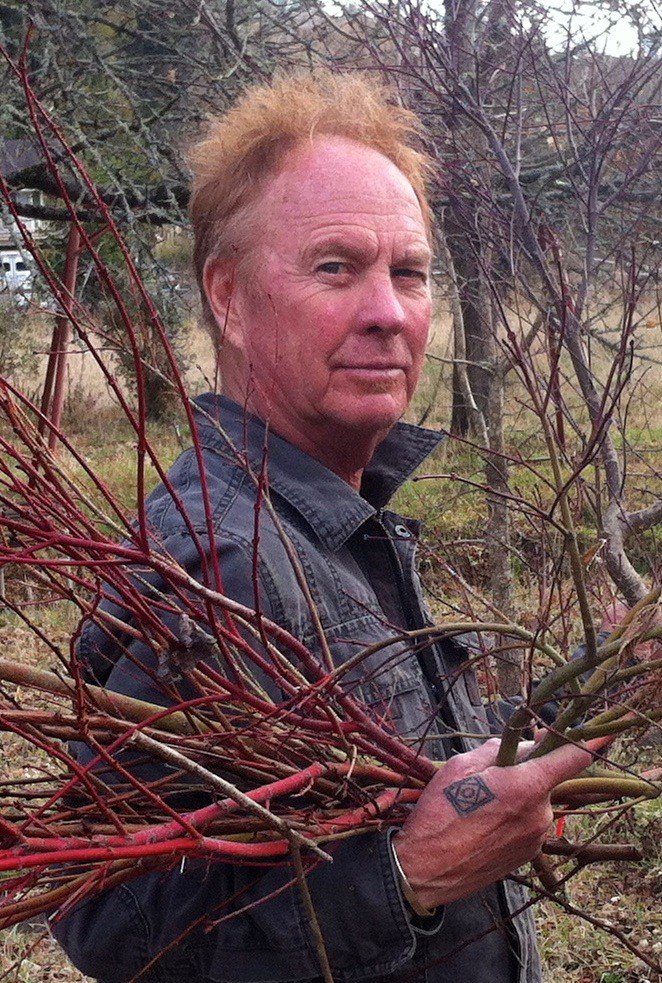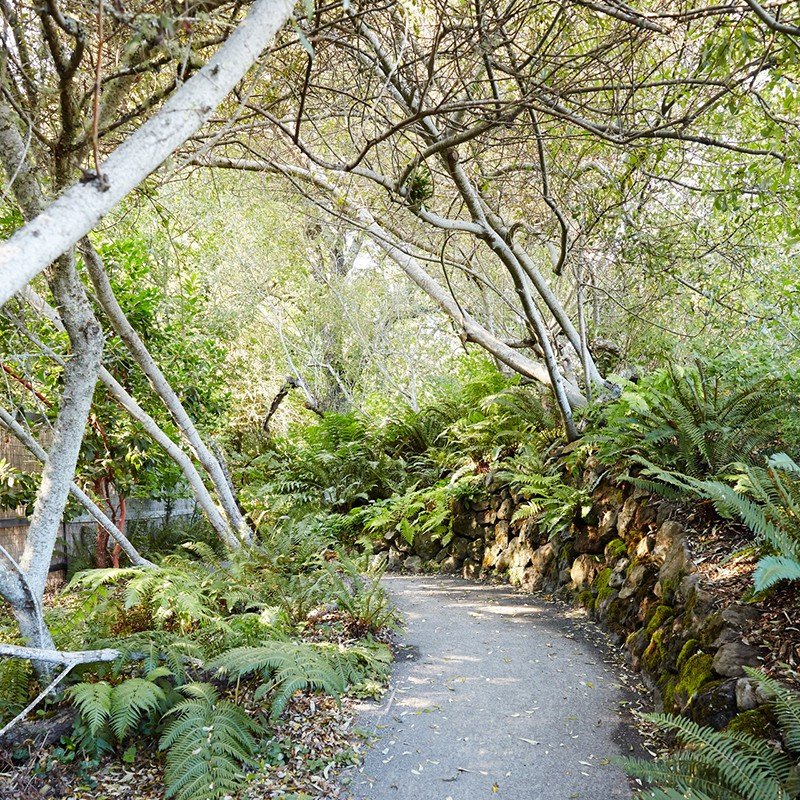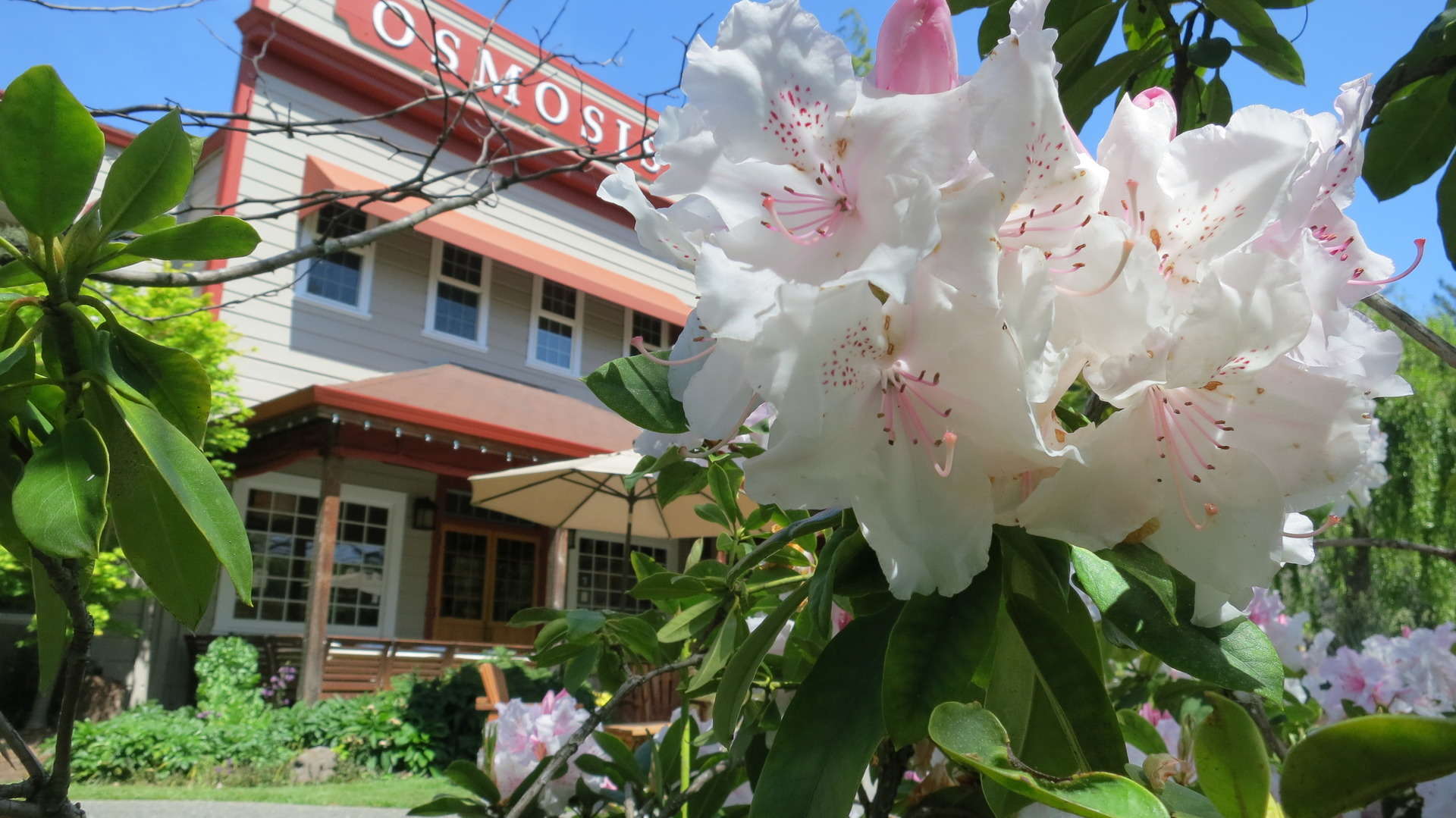Nurturing Osmosis’s Japanese Garden – Winter/Spring 2019
By Michael Alliger, Master Pruner
Here in west Sonoma County, California, 5 miles from the Pacific Ocean, March is the turning point of the seasons. In the Osmosis garden, winter work is nearly finished with the anticipation of spring’s soft explosion at hand. Though the weather varies, the seasons are consistent. Winter is marked by the loss of leaves on deciduous trees indicating the relative inactivity or dormancy of all plant material. Among the first signs of spring are the flowers of plum, which precede leaf growth.
Window of Opportunity
The window of opportunity for winter pruning is in this dormant period indicated by bare branches. Insect activity is also reduced at this time, lessening the chance for infestation. Winter work falls into two categories: Structural Reduction & Correction and Refinement of the winter silhouette (look). We learn from Japanese gardens that within the garden walls trees are kept at human scale, not towering above, as is their wont. Therefore, a consistent effort to contain trees and shrubs throughout the year is ramped up in winter as dormancy allows for more aggressive pruning.
One such situation in the Osmosis garden is the presence of a planted Monterey Cypress. Left on its own it would dominate and outgrow the limited space it is afforded. Yet for nearly 20 years we have managed to keep it at approximately 15’ with a fairly natural appearance. Normally this tree would not be a good candidate for a garden but, it was a gift and we have taken it on as an experiment to see what might be the possibilities and limitations of this native plant.
We have a large Mayten tree (broadleaf evergreen) anchoring one corner of our tea garden. This fast-growing tree is necessarily reduced and thinned each winter. We also have two Douglas Firs (another native) which are maintained in our bath garden as large shrubs (!) at about 8’.
Osmosis has a limited number of Japanese Maples with each being planted at a primary location (path or pond) in the garden. Ranging in size from diminutive (18” x 36”) to person-sized (6’ x 5’) these trees must look excellent all through the year. This means winter pruning is required not only to set up a beautiful spring/summer look but also to treat the eye in winter to the intricate delicacy of bare branches.
Pine Trees
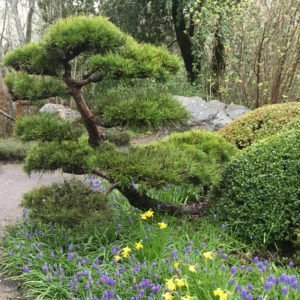 Along with the evergreens previously mentioned Osmosis has a number of Pines that get close attention. We have three Red Pines and three Black Pines. Two of the red pines are structurally pruned in winter to maintain proper scale. All the pines are groomed of excessive needles both as a matter of appearance and to help limit spring growth by reducing photosynthesis.
Along with the evergreens previously mentioned Osmosis has a number of Pines that get close attention. We have three Red Pines and three Black Pines. Two of the red pines are structurally pruned in winter to maintain proper scale. All the pines are groomed of excessive needles both as a matter of appearance and to help limit spring growth by reducing photosynthesis.
Support plants such as Grasses and Tamamono (mound-shaped shrubs) are also seen to in winter. Grasses are cut to the ground in anticipation of spring’s regeneration while the sheared shrubs may get a thorough opening up with hand pruners to allow light and air to reach inner branches that back budding may occur. Back budding is the breaking out of new leaves on bare wood. The vitality of inner wood helps ensure fullness at the time of spring shearing.
Bamboo
Thinning of Bamboo is begun in fall and may continue into winter. Third-year culms (canes) will be dying back and are thus removed along with weak or excessively crowding culms.
Transplanting is also scheduled for winter again because of dormancy. This year we flip-flopped Hellebores with Red Buckwheat plants that found themselves in each other’s microclimates. We also removed a large and languishing Rosemary from our entryway and replace it with a grouping of three small Hinoki trees and an array of Manzanitas.
Advent of Spring
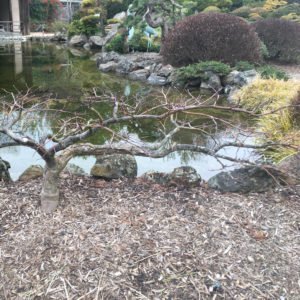
With the advent of spring, the gardener sharpens tools, restocks sunscreen and cinches up her belt in preparation for the marathon to come. The surge of the plant world is both inspiring and
daunting. With so much growth at once, the garden pruner must establish priorities. Decisions are based upon the degree of unruliness and visual prominence.
Though Japanese Maples are amongst the most meaningful plants in the Osmosis garden their gently soft spring growth is so welcome and complacent that pruning may be set aside for more pressing matters.
When the time comes, Maples are both thinned and reduced for proper scale and a natural look. The one caveat is that when maples are in full sun or receive a lot of afternoon sun care should be taken to not open large holes in the canopy as inner leaves and bark can burn if suddenly exposed to strong heat/light.
Importance of Hedges and Shrubs
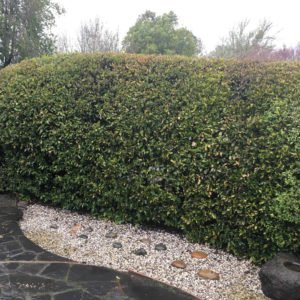 One of the possibly more pressing matters mentioned above is the 30’ Green Dragon Hedge separating the meditation garden from its entry gate. The importance of this hedge cannot be overstated as it provides the hide-and-reveal effect so integral to Japanese gardens allowing for a gradual revelation as guests follow the path. Once grown out wild, this element becomes more of a distraction than subtle influence so it’s imperative to keep it in bounds.
One of the possibly more pressing matters mentioned above is the 30’ Green Dragon Hedge separating the meditation garden from its entry gate. The importance of this hedge cannot be overstated as it provides the hide-and-reveal effect so integral to Japanese gardens allowing for a gradual revelation as guests follow the path. Once grown out wild, this element becomes more of a distraction than subtle influence so it’s imperative to keep it in bounds.
At Osmosis, we use manual hedge shears rather than gas or electric powered. The cleaner, sharper result is well worth the extra time and effort in a garden where aesthetics encourage a peaceful meditative state.
Along these lines, the individual sheared shrubs (we use variously Berberis, Euonymus, Spiraea and Germander) are sometimes overlooked in deference to the dramatic appearance of pines and maples yet their function in the garden is paramount as a grounding element and counterpoint to the focal trees. These smaller shrubs (Tamamono) must be tended with consistent care especially with spring’s first burst.
Flowering Trees
Perhaps flowering trees such as Camellias, Rhododendrons, Ribes and Magnolia present questions as to when to prune them. In all these cases, as with Plum, the flowers appear before the leaves. This means that a well-maintained plant won’t need pruning (except grooming and deadheading) until after the new vegetative (leafy) growth occurs and extends. Observation leads to pruning guidelines.
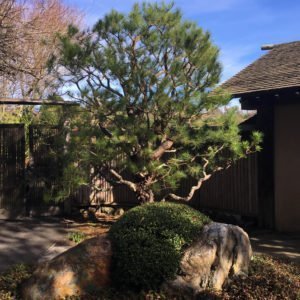
Lastly, in our discussion of spring pruning is the Japanese Black Pine. Whiles there are many approaches to pine pruning, here at Osmosis we
remove the candle growth in spring followed byselective thinning in fall and winter. Candle is the term for the initial spring shoot growing on pines. Candle growth generally signal the strength and will power of the tree as it tries to attain its genetic height (60’). This size being beyond “human scale” in the garden, forces us to meet the tree’s will with skill and an aesthetic will of our own. As they extend, candles initially look like tubes; when they stop extending needle open out from the tubes. It is at this time they are removed in favor of their replacements, which develop over the summer in greater numbers and lesser length.

